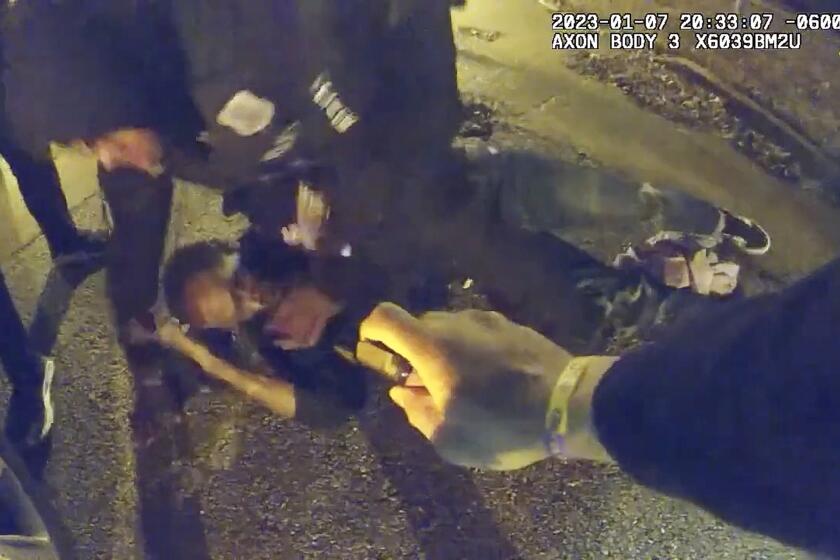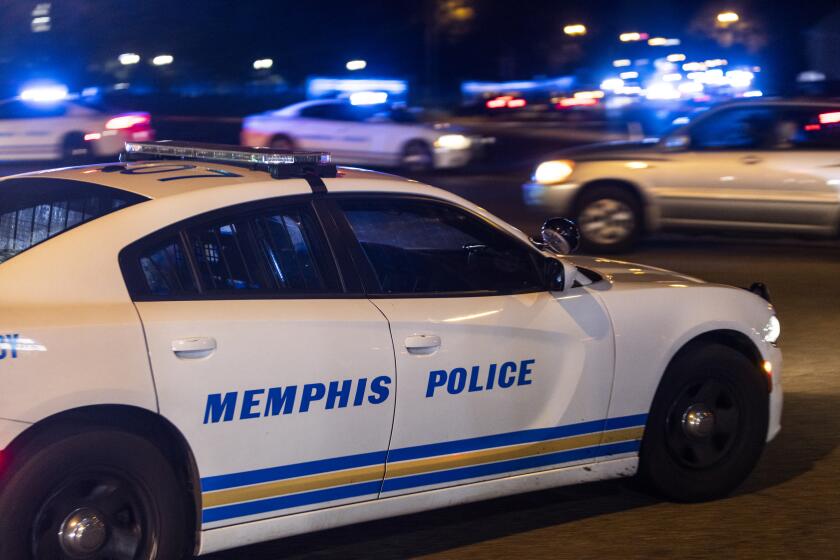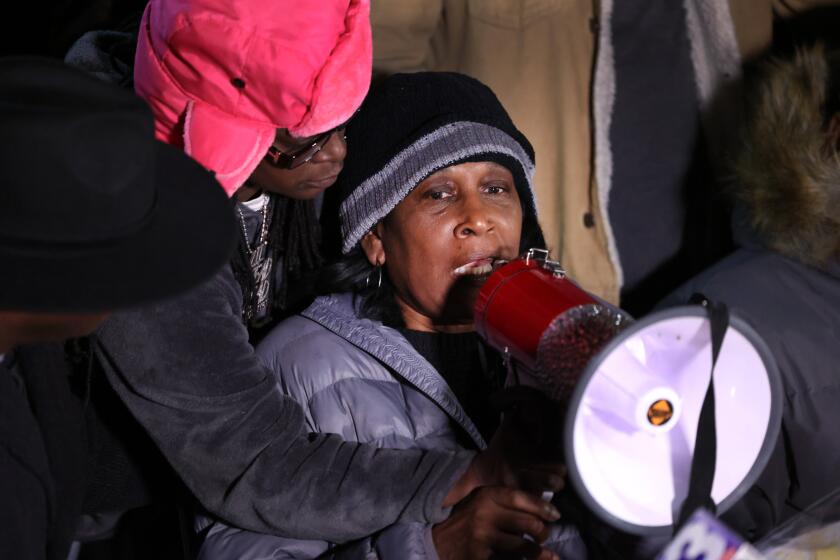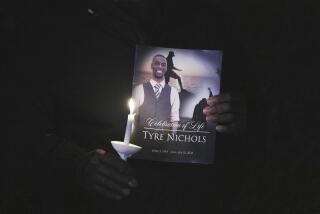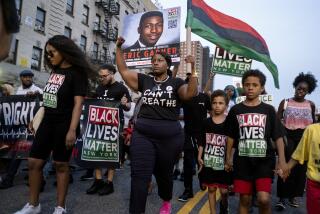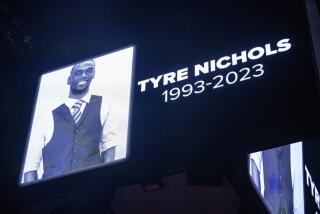What Tyre Nichols’ death at the hands of Black officers says about race in policing
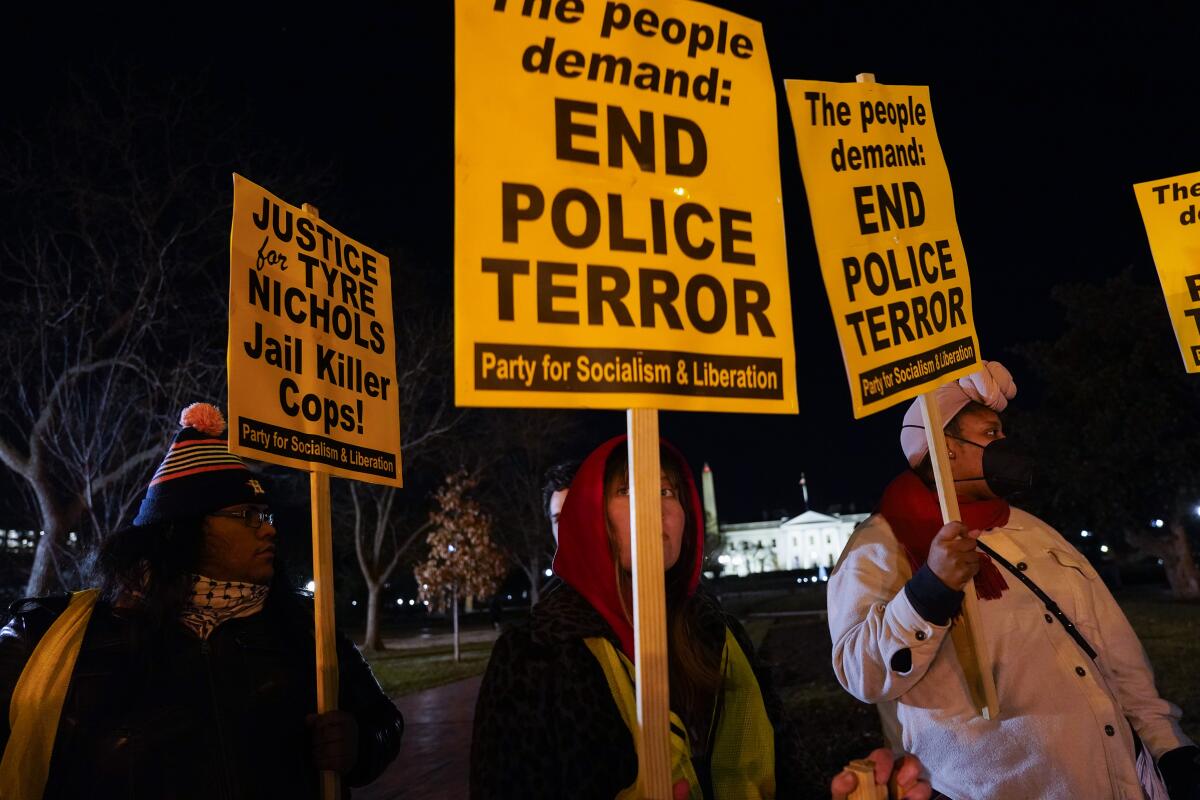
The cycle of police violence and protest in America has so often been told as a story of white officers killing Black men that three words — “Black lives matter” — stand as global shorthand.
But the death of Tyre Nichols has challenged the narrative.
The 29-year-old FedEx worker — who died after police in Memphis, Tenn., pulled him over, used a Taser and pepper spray on him and severely beat him — was a Black man. So are the five police officers charged with murdering him.
Memphis’ police chief, who has condemned and fired the officers, is a Black woman. And more than half the police force in Memphis, a majority Black city, is Black.
Making law enforcement more racially diverse has long been promoted as a way to improve community relations and reduce police violence against racial minorities. Experts who study race, policing and use of force say diversifying can sometimes make a difference, but as the events in Memphis suggest, that may not always be the case. The limited research suggests that officers’ race may matter less than many Americans might think.
“The connection between race and policing is very complicated,” said Christy Lopez, a Georgetown University law professor who led the Justice Department team that investigated police in Ferguson, Mo. “There is no panacea with having Black officers.”
Some experts say police violence like that against Nichols, who died in a hospital three days after his Jan. 7 beating, has less to do with officers’ race and more to do with something deeply ingrained in policing as a whole.
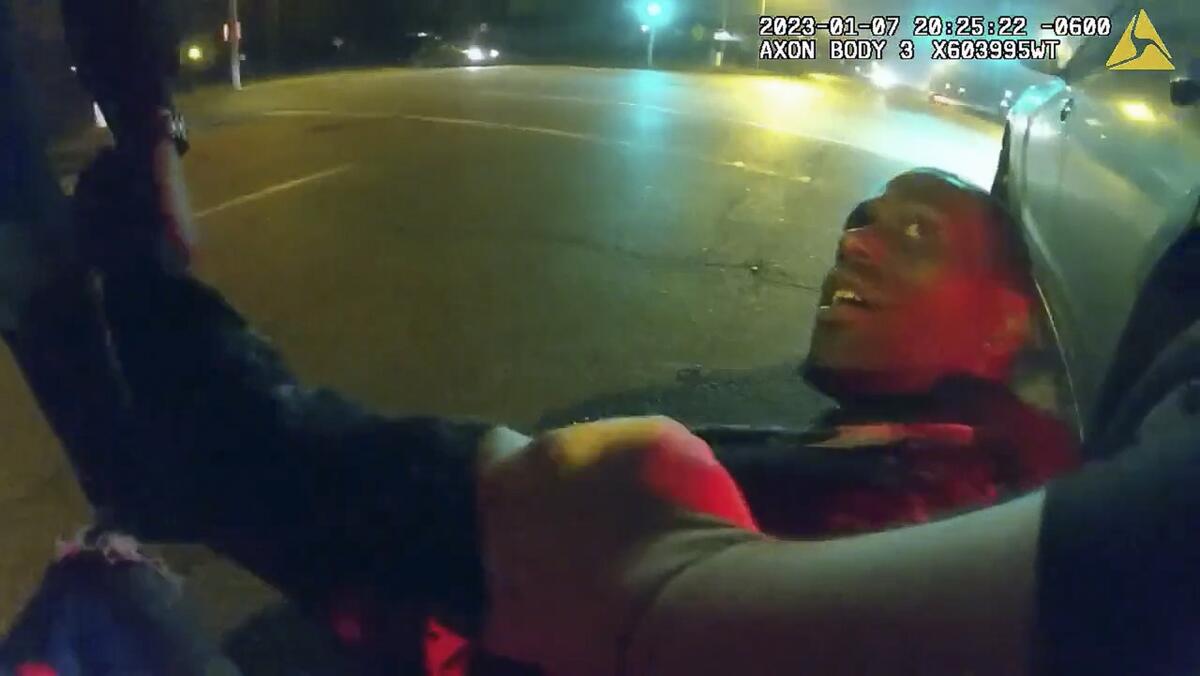
“Here’s a dirty little secret: Studies indicate that Black officers are just as brutal and at times even more brutal against Black bodies as their white counterparts,” said Duane Loynes Sr., an assistant professor of urban and Africana studies at Rhodes College in Memphis, whose research focuses on the relationship between Black communities and police.
The city of Memphis released video Friday showing Tyre Nichols being shot with a Taser, pepper-sprayed, beaten and restrained for three minutes by police.
“If a system is problematic,” Loynes said, “it doesn’t matter who you plug into it. You will get the same result.”
In one 2017 study, professors at Indiana University examined data on police shootings from the advocacy group Mapping Police Violence and a separate data set from the Washington Post. They compared the data to diversity information from police department rolls in the 100 largest cities. Then, they checked it all against broader numbers on demographics and shootings.
Their conclusion: “Increasing the proportion of the force that is Black does not appear to be an effective strategy for reducing police-involved homicides of Black citizens in most large cities.”
There were caveats. The analysis looked only at shootings in 2014 and 2015. In 2014, Ferguson police shot and killed Michael Brown, setting off widespread protests and bringing law enforcement reform to the forefront of policy debates in America.
The report’s conclusions focused on departments that began with smaller Black representation and increased it. At least 30% to 35% of a department would need to be Black to reach a “critical mass,” researchers wrote, as “individuals may only begin to act in ways that help other minorities ... when they are empowered by a large enough number.”
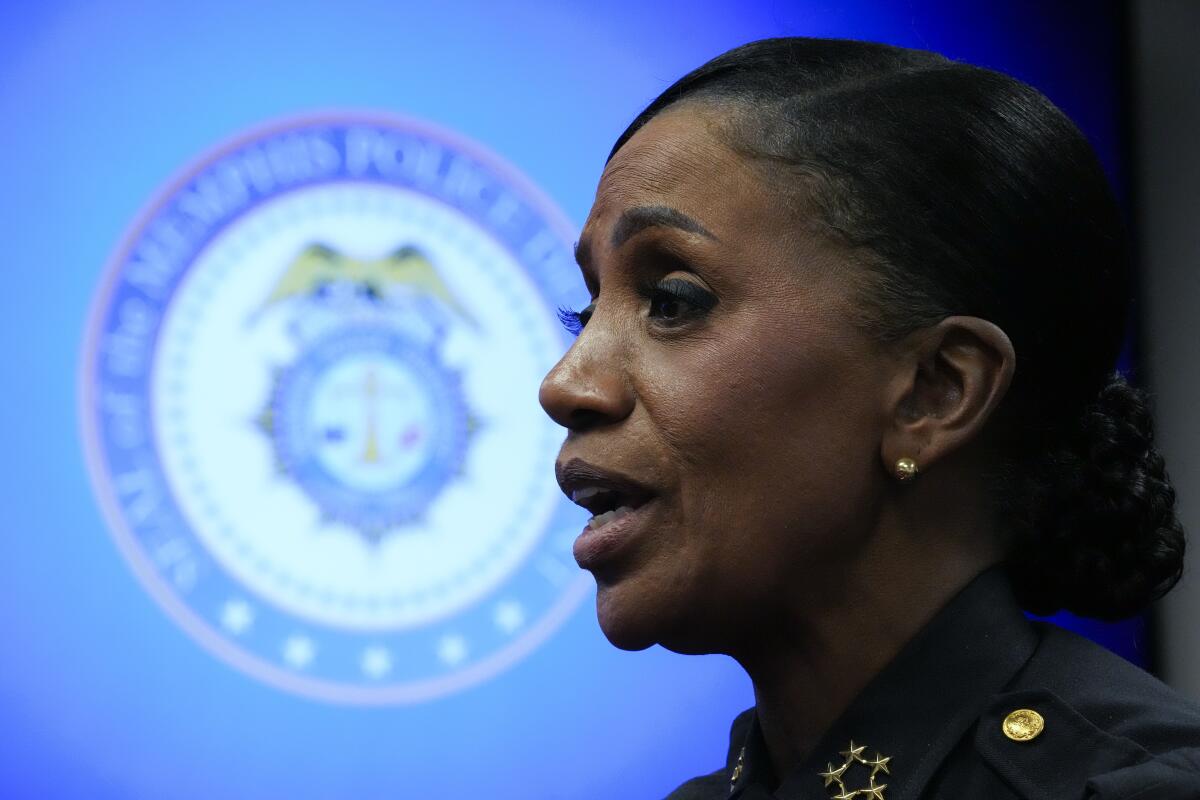
In the Memphis Police Department, 58% of nearly 2,000 commissioned officers are Black, 37% are white and 3% are Hispanic, according to the city government. The share of Black officers has been increasing, including by 2 percentage points since 2021. The department has a long history of a strong Black police presence and Black leadership, according to archived news articles and experts that The Times interviewed.
The brutality shown in graphic videos of Memphis police officers beating Tyre Nichols was roundly condemned by law enforcement use-of-force experts as indefensible and “sadistic.”
Lopez, who has led Justice Department investigations of policing practices in Chicago, New Orleans and Los Angeles, said that even with “majority minority” police departments, problems with police violence and race can persist.
“Yes, it does make some difference, and yes, race does matter — but the problems in policing are much bigger,” she said. “Black police officers can be subject to the same stereotypes that white officers are. They can be pressured to conform, to be ‘more blue than Black,’ to prove they are more loyal to the badge and won’t show favoritism.”
‘We’re fooling ourselves’
“When I’ve gone around communities in the U.S. to talk to residents about policing, they’ve often asked for more Black officers as a way to fix things,” Lopez said. “But we’re fooling ourselves if we think race is the only solution.”
Experts say that faulty popular perceptions of racial dynamics in policing are only part of the issue. Another big hurdle is data.
“The data — or lack thereof — is part of the problem in identifying patterns and solutions when it comes to race and policing,” said William Sousa, a professor and director of the Center for Crime and Justice Policy at the University of Nevada, Las Vegas, who studies the use of force among police.
“Getting a national database of use of deadly force has been an incredibly difficult undertaking; on the federal government level it just doesn’t exist,” he said. “It then gets harder if you look at ‘less lethal’ force or look at race.”
But “there is well-known data showing Black neighborhoods tend to be more policed” and that Black people are more likely to experience violent encounters with cops when compared with other racial groups, he said.
All five of the Memphis police officers charged with murder in the beating of Tyre Nichols are members of the department’s “SCORPION” unit.
Deeper research has only started to come to light in the last decade after the rise of the Black Lives Matter movement and as government, universities and police training academies give greater attention to policing reform.
In a 2017 analysis that examined data on thousands of shootings in Houston, Los Angeles, Boston and nine other major cities, Harvard University economist Roland G. Fryer Jr. found that Black and Hispanic people were at least 50% more likely than members of other races to experience violence when they are approached by police.
What’s been harder to discern in many studies has been the role of the race of officers.
Such interactions can be difficult to parse: Suspects’ races are routinely recorded by police, but officers’ races are not. That leaves analysts struggling with image searches, media reports, and guesswork based on names.
Because there are no comprehensive federal data on police shootings or other uses of deadly force, the work has been left to professors, journalists and activists who draw from police departments, media reports and multiple local and federal agencies to try to come to conclusions.
Sometimes, they can get it wrong.
In 2019, a study in the Proceedings of the National Academy of Sciences analyzed police gunfire and the race of those shot using data from 2015. It found no “evidence for anti-Black or anti-Hispanic disparity in police use of force across all shootings.” But in 2020, the authors retracted their study, saying they had been “careless when describing the inferences that could be made from our data.”
Other research has come to different conclusions.
A 2021 analysis released in the journal Science and conducted by researchers then at UC Irvine, University of Pennsylvania, and Princeton and Columbia universities looked at 2.9 million shifts worked by nearly 7,000 Chicago police officers over a three-year period. It found that “Black and Hispanic officers make far fewer stops and arrests and they use force less often, especially against Black civilians.” And the researchers found that “female officers also use less force than males ... within all racial groups.”
The results, crunched using public records requests and U.S. census data from 2012 to 2015, suffered from some of the same issues as other studies, the researchers wrote. Their work had the limited scope of just one city, albeit the nation’s third-biggest and one of its most diverse in population and police force makeup. The study looked specifically at low-level offenses that traditionally should be the least likely to cause an officer to make an arrest, use physical force or draw a gun.
And the authors cautioned that their conclusion that “diversity reforms can improve police treatment of minority communities” should not alone be used to generalize about potential future results of police diversity in Chicago or other parts of the nation.
A brutal beating
In Memphis, video of Nichols’ encounter with police was released Friday, showing the officers beating him as he lay on the ground. The father of a 4-year-old, he can be heard calling out repeatedly, in anguished cries, for his own mother. It all happened about 80 yards from his home.
The city of Memphis has released the video footage showing the actions of officers and Tyre Nichols after a traffic stop.
RowVaughn Wells, Nichols’ mother, has said she had to stop watching the officers’ body-camera videos. She has also said the race of the officers doesn’t matter.
“It’s not about the color of the police officer. We don’t care if it’s Black, white, pink, purple. What they did was wrong,” she said at a news conference this week. “And what they’re doing to the Black communities is wrong. We’re not worried about the race of the police officer. We’re worried about the conduct of the police officers.”
Speaking Friday ahead of the video’s release, Rodney Wells, Nichols’ stepfather, said his family was “satisfied” with how quickly the officers were charged. They were fired just over a week after Nichols’ death, and charged with second-degree murder and other offenses after 16 days.
“What I’m seeing here is transparency and accountability, which is something we don’t always see,” Brenda Goss Andrews, president of the National Organization of Black Law Enforcement Executives, said in an interview.
The city of Memphis, Tenn., has released the video footage of police officers beating Tyre Nichols after a traffic stop.
“We always look so quickly at race that we lose sight of the fact that a human has died,” said Andrews, who worked 30 years as a Detroit police officer. “It seems the first thing we look at before we even determine what happened in cases like this is the race of the individuals involved.”
Experts who study policing have also questioned whether race played a role in the rapid firing and charging of the officers.
Charlene Shroulote-Durán, who teaches criminal justice at New Mexico State University, said that when white officers are involved, she hears reactions such as, “‘Oh, they feared for their lives,’ or ‘Let’s wait until we know the whole story,’ or ‘Let’s wait until we see the video.’”
In cases with white officers, she said, “There’s always this sort of pause, where they’re put on administrative leave, and then there’s an investigation. But here they were fired right away.”
Rashawn Ray, a professor of sociology at the University of Maryland who studies race in police-civilian relations, said research has shown that Black officers are reprimanded more than white officers for similar policy violations and are less likely to be promoted.
“Maybe what needs to happen nationally,” he said, “is ensuring that white officers are held to the same accountability standards as these five Black officers in Memphis.”
Times staff writer Libor Jany in Memphis contributed to this report.
More to Read
Start your day right
Sign up for Essential California for news, features and recommendations from the L.A. Times and beyond in your inbox six days a week.
You may occasionally receive promotional content from the Los Angeles Times.


